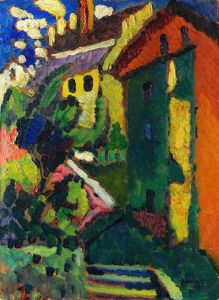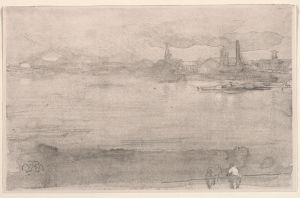
Millbank
A hand-painted replica of James Abbott McNeill Whistler’s masterpiece Millbank, meticulously crafted by professional artists to capture the true essence of the original. Each piece is created with museum-quality canvas and rare mineral pigments, carefully painted by experienced artists with delicate brushstrokes and rich, layered colors to perfectly recreate the texture of the original artwork. Unlike machine-printed reproductions, this hand-painted version brings the painting to life, infused with the artist’s emotions and skill in every stroke. Whether for personal collection or home decoration, it instantly elevates the artistic atmosphere of any space.
James Abbott McNeill Whistler was an American artist active during the late 19th century, known for his contributions to the Aesthetic Movement and his influence on the art world in both Europe and America. One of his lesser-known works is "Millbank," a painting that reflects his unique style and artistic philosophy.
"Millbank" is a part of Whistler's series of London landscapes, which he painted during his time in the city. Whistler moved to London in 1859 and became fascinated with the city's atmospheric qualities, particularly the effects of fog and light on the River Thames. This fascination is evident in "Millbank," where Whistler captures the subtle interplay of light and shadow, creating a moody and evocative scene.
The painting depicts the Millbank area of London, which is located on the north bank of the River Thames. During Whistler's time, Millbank was an industrial area, home to factories and warehouses. However, Whistler's depiction of Millbank is not focused on the industrial aspects but rather on the atmospheric conditions and the river itself. The painting is characterized by its muted color palette and delicate brushwork, which are hallmarks of Whistler's style.
Whistler was heavily influenced by Japanese art, particularly the use of space and simplicity, which can be seen in "Millbank." The composition is carefully balanced, with the river occupying a significant portion of the canvas, and the buildings and sky rendered in soft, harmonious tones. This approach reflects Whistler's belief in "art for art's sake," where the aesthetic experience is prioritized over narrative content.
"Millbank" also exemplifies Whistler's interest in capturing fleeting moments and the transient effects of light. The painting's atmospheric quality suggests a specific time of day, likely early morning or late afternoon, when the light is soft and diffused. This focus on capturing a moment in time aligns with the Impressionist movement, which was gaining prominence in France during the same period. However, Whistler's work is distinct from Impressionism in its emphasis on composition and tonal harmony.
Whistler's approach to painting was often met with mixed reactions from critics and the public. Some appreciated his innovative techniques and the beauty of his compositions, while others found his work too abstract or lacking in detail. Despite this, Whistler remained committed to his artistic vision, and his work, including "Millbank," has since been recognized for its contribution to modern art.
Today, Whistler is celebrated as a pioneering figure in the art world, and his works are held in high regard by art historians and collectors alike. "Millbank" serves as an example of his ability to transform a seemingly ordinary scene into a work of art that captures the viewer's imagination and evokes a sense of place and time. Through his unique approach to painting, Whistler has left a lasting legacy that continues to influence artists and art enthusiasts around the world.


















